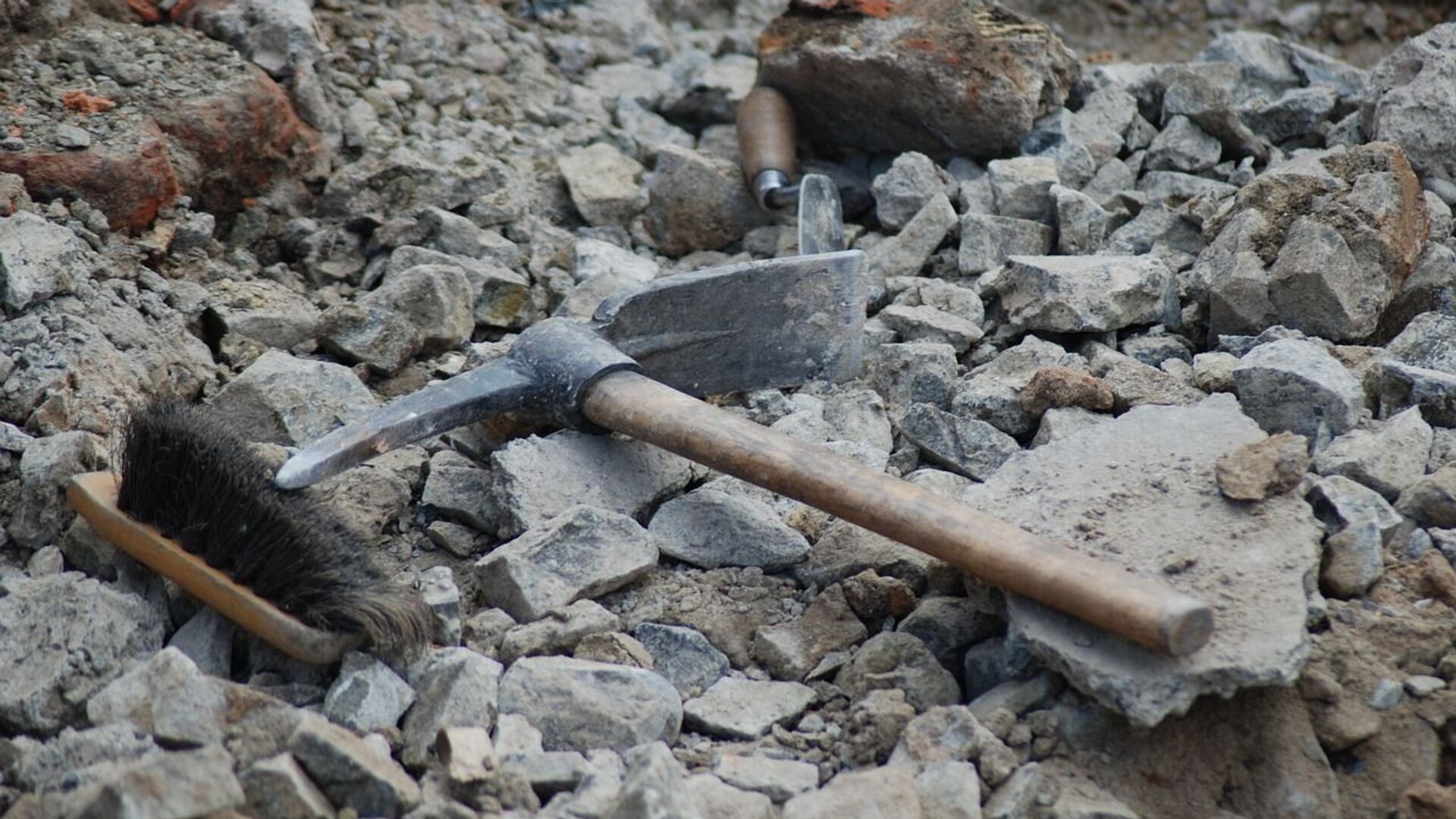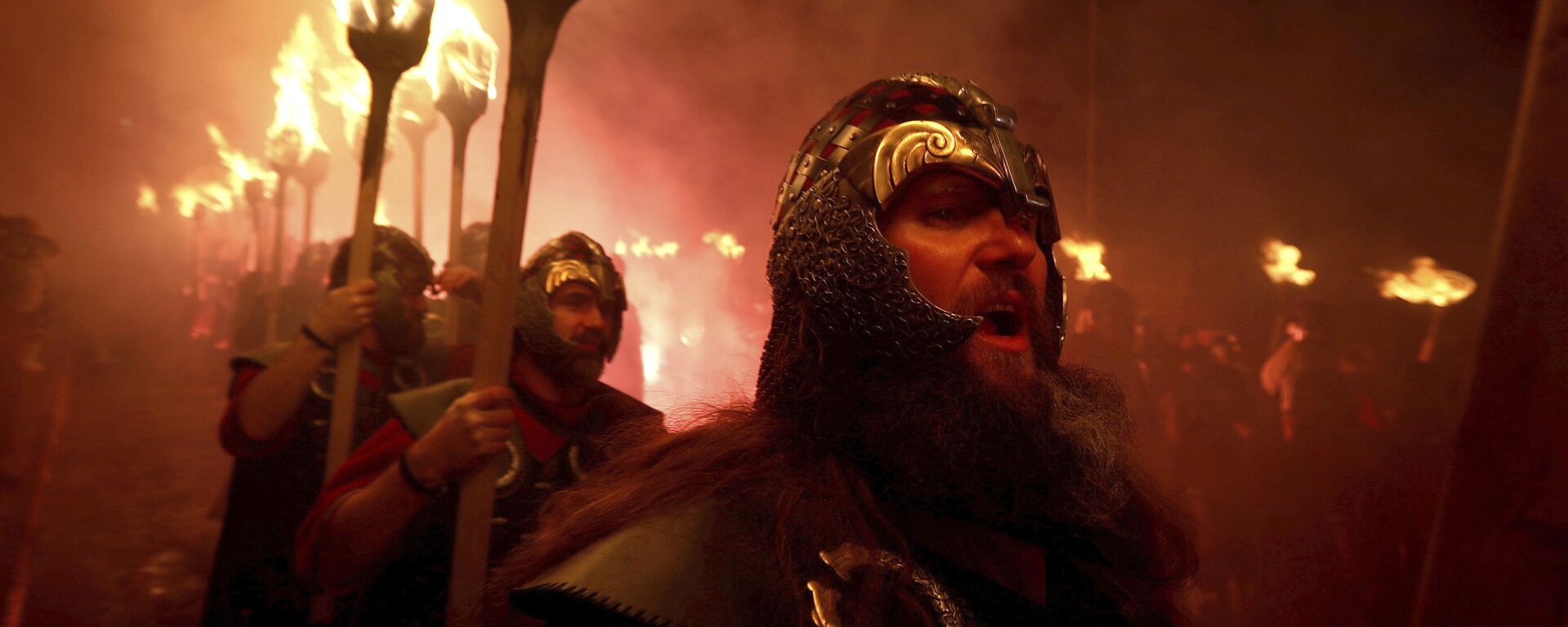https://sputnikglobe.com/20210802/secrets-of-medieval-finnish-warrior-buried-in-womens-clothing-uncovered-by-scientists-1083510821.html
Secrets of Medieval Finnish Warrior Buried in Women's Clothing Uncovered by Scientists
Secrets of Medieval Finnish Warrior Buried in Women's Clothing Uncovered by Scientists
Sputnik International
Items found at the burial site include valuable furs, trinkets and brooches, as well as two swords. 02.08.2021, Sputnik International
2021-08-02T19:03+0000
2021-08-02T19:03+0000
2021-08-02T19:03+0000
science & tech
society
newsfeed
finland
warrior
grave
study
https://cdn1.img.sputnikglobe.com/img/07e4/07/10/1079904806_0:110:1281:830_1920x0_80_0_0_0ca9a68ea14540d5b4fc17a3cb682cbb.jpg
Scientists have apparently unravelled the mystery of a Finnish warrior’s burial – after his remains were discovered over five decades ago.According to The Daily Mail, the grave, found in 1968 in Suontaka Vesitorninmaki, Hattula "during a digging project for a water pipe" was originally believed to be a burial of a high-ranking female or "double burial of a man and woman."However, a new study by archaeologists from the University of Turku suggests that the person interred there might’ve been "non-binary" or rather – as the newspaper points out – intersex, and suffering from a genetic condition known as Klinefelter syndrome, when a male is born with an extra X chromosome.While such person is "still genetically male" they can display "enlarged breast growth, infertility, diminished muscle mass, and reduced body and facial hair."The body, which dates to between 1050 AD and 1300 AD, was wearing feminine clothes typical for the Middle Ages and was buried on a feather blanket with "valuable furs, trinkets and brooches," researchers reportedly said, which apparently points to high social status of the deceased.Two swords were also discovered at the burial.
https://sputnikglobe.com/20210723/rare-viking-graves-on-orkney-under-scientific-scrutiny-1083443933.html
finland
Sputnik International
feedback@sputniknews.com
+74956456601
MIA „Rossiya Segodnya“
2021
News
en_EN
Sputnik International
feedback@sputniknews.com
+74956456601
MIA „Rossiya Segodnya“
Sputnik International
feedback@sputniknews.com
+74956456601
MIA „Rossiya Segodnya“
science & tech, society, newsfeed, finland, warrior, grave, study
science & tech, society, newsfeed, finland, warrior, grave, study
Secrets of Medieval Finnish Warrior Buried in Women's Clothing Uncovered by Scientists
Items found at the burial site include valuable furs, trinkets and brooches, as well as two swords.
Scientists have apparently unravelled the mystery of a Finnish warrior’s burial – after his remains were discovered over five decades ago.
According to The Daily Mail, the grave, found in 1968 in Suontaka Vesitorninmaki, Hattula "during a digging project for a water pipe" was originally believed to be a burial of a high-ranking female or "double burial of a man and woman."
However, a new study by archaeologists from the University of Turku suggests that the person interred there might’ve been "non-binary" or rather – as the newspaper points out – intersex, and suffering from a genetic condition known as Klinefelter syndrome, when a male is born with an extra X chromosome.
While such person is "still genetically male" they can display "enlarged breast growth, infertility, diminished muscle mass, and reduced body and facial hair."
"According to current data, it is likely that the individual found in Suontaka had the chromosomes XXY, although the DNA results are based on a very small set of data," said Elina Salmela, postdoctoral researcher from the University of Helsinki.
The body, which dates to between 1050 AD and 1300 AD, was wearing feminine clothes typical for the Middle Ages and was buried on a feather blanket with "valuable furs, trinkets and brooches," researchers reportedly said, which apparently points to high social status of the deceased.
Two swords were also discovered at the burial.
"If the characteristics of the Klinefelter syndrome were evident on the person, they might not have been considered strictly a female or a male in the Early Middle Ages community," said Ulla Moilanen from the University of Turku. "The abundant collection of objects buried in the grave is a proof that the person was not only accepted but also valued and respected. However, biology does not directly dictate a person's self-identity."


